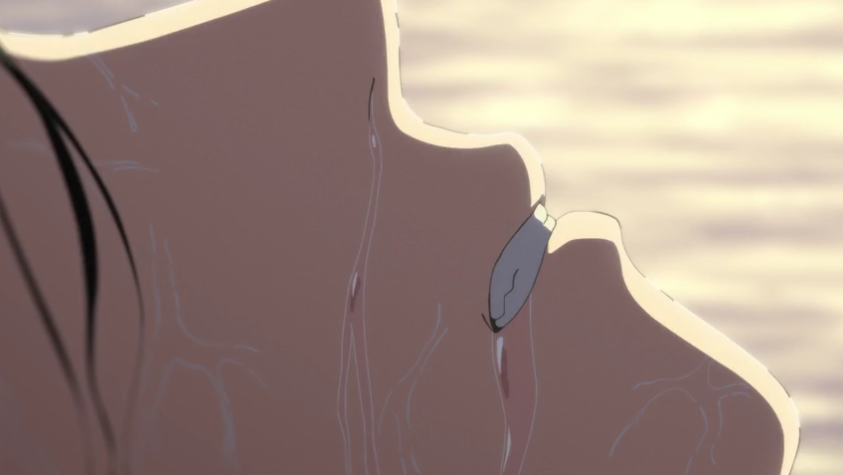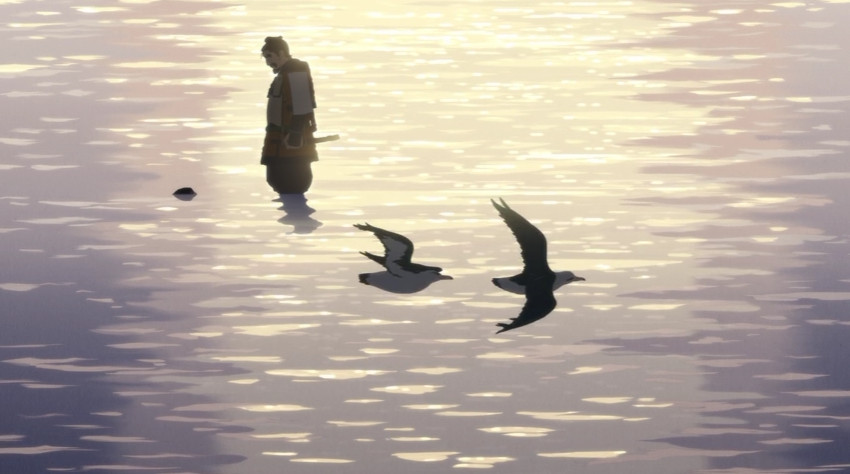The ninth episode of Heike Monogatari has particularly struck me through its visuals. The following scene, which serves as the climax to the battle between Taira no Atsumori and Kumagai Naozame, is representative of some of the aspects that made this particular episode so appealing.
The build-up to this particular scene presents some great animation. However, what strikes me most about this one is not its animation but its direction and storyboarding by Ryohei Takeshita.
While the struggle of the battle of going on, the focus is on the action and movement. The scene is thought out to let the animator’s mind express himself. But as Kumagai Naozome hesitates to finish his foe, the directing changes to a much stiller, cinematographic approach, and the emphasis shifts to shot composition and timing.
The detail that made me rethink how I viewed this scene is the rack focus when the Heike’s troops approach. Because anime is not shot with an actual camera, the intention of reproducing such an effect shows the will to emulate cinema.
The very intrusive shots put us right in the intimacy of these characters and their internal conflicts, amplifying their emotions and intentions’ expression through such framing.

The wider shot of the character lying in the water, the prolonged timing, and its stillness do a great job expressing Kumagai’s hesitation. Even though the characters are still in that scene, there is always a sense of movement. In this case, the flow of water and the reflection of light on its surface.
I can’t help but think of Akira Kurosawa’s filmmaking, which would often take a similar approach to include elements of movement, such as rain pouring in the background of scenes where the foreground would stay still. It allows, in my opinion, for a better appreciation of the flow of time despite the lack of action. In this case, helping to understand the internal struggle the warrior is going through.

As we cut to a close-up of the galloping horses’ hooves, a sense of urgency emerges, and the rhythm at which we cut intensifies exponentially. We feel that Kumagai is backed into a corner and has to make a decision until, finally, he gives the final blow.
Rather than showing us the violent strike, we cut to a shot of two albatross flying, reconciling with a calmer rhythm. The birds are a beautiful metaphor as albatrosses are thought to carry the souls of the dead at sea. Them flying through the middle of the shot as Atsumori’s lifeless body is sinking underwater is a poetic way to portray the passage to the afterlife.

The scene ends with a fisheye shot on Biwa, which once again exemplifies the use of cinematographic techniques, that can be found throughout this episode, mainly through the use of lighting and lens flare.

Recent Comments